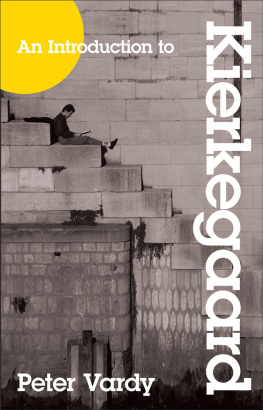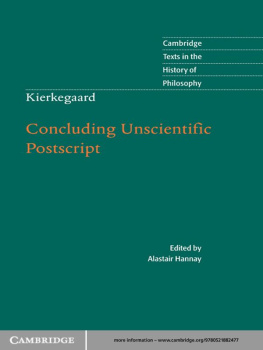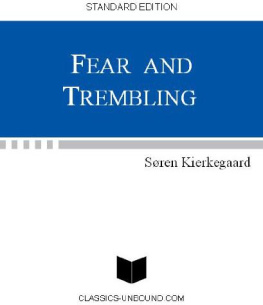Bloomsbury Readers Guides
Bloomsburys Readers Guides are clear, concise and accessible introductions to classic works of philosophy. Each book explores the major themes, historical and philosophical context and key passages of a major philosophical text, guiding the reader toward a thorough understanding of often demanding material. Ideal for undergraduate students, the guides provide an essential resource for anyone who needs to get to grips with a philosophical text.
Readers Guides available from Bloomsbury
Aristotles Nicomachean Ethics Christopher Warne
Aristotles Politics Judith A. Swanson and C. David Corbin
Berkeleys Principles of Human Knowledge Alasdair Richmond
Berkeleys Three Dialogues Aaron Garrett
Deleuze and Guattaris Capitalism and Schizophrenia Ian Buchanan
Deleuzes Difference and Repetition Joe Hughes
Derridas Writing and Difference Sarah Wood
Descartes Meditations Richard Francks
Hegels Philosophy of Right David Rose
Heideggers Being and Time William Blattner
Heideggers Later Writings Lee Braver
Hobbess Leviathan Laurie M. Johnson Bagby
Humes Dialogues Concerning Natural Religion Andrew Pyle
Humes Enquiry Concerning Human Understanding Alan Bailey and Dan OBrien
Kants Critique of Aesthetic Judgement Fiona Hughes
Kants Critique of Pure Reason James Luchte
Kants Groundwork for the Metaphysics of Morals Paul Guyer
Kuhns The Structure of Scientific Revolutions John Preston
Lockes Essay Concerning Human Understanding William Uzgalis
Lockes Second Treatise of Government Paul Kelly
Mills On Liberty Geoffrey Scarre
Mills Utilitarianism Henry West
Nietzsches On the Genealogy of Morals Daniel Conway
Nietzsches The Birth of Tragedy Douglas Burnham and Martin Jesinghausen
Platos Republic Luke Purshouse
Platos Symposium Thomas L. Cooksey
Rousseaus The Social Contract Christopher Wraight
Sartres Being and Nothingness Sebastian Gardner
Spinozas Ethics Thomas J. Cook
Wittgensteins Tractatus Logico Philosophicus Roger M. White

For Mark
At several moments during the course of writing this book, I have been visited by the question of why I am writing it. These visits have not always been especially welcome, and the question has been surprisingly difficult to answer. There are, I think, good reasons for producing a clear guide to Kierkegaards Fear and Trembling: this is a challenging and enigmatic text, and even though some readers find it more captivating than many other works of philosophy, there is always a danger of becoming bored by a book one doesnt understand. Thus one reason for writing an accessible commentary on Fear and Trembling is to encourage readers to persist with it and to plumb its depths, in order not only to do its author justice, but also to be rewarded by a fascinating, profound and influential book that it would be a shame to miss out on.
However, when I was first asked to write this Readers Guide, I was aware that excellent introductions to Fear and Trembling were already available. John Lippitts Routledge Philosophy Guidebook to Kierkegaard and Fear and Trembling (2003) and Edward Mooneys Knights of Faith and Resignation: Reading Kierkegaards Fear and Trembling (1991), for example, are both highly recommended, and the editorial introductions to various English translations of the text such as those by C. Stephen Evans and Sylvia Walsh, Alastair Hannay, and Howard and Edna Hong are all authoritative and illuminating.
So the question, it became clear, was about why I am writing a guide to Fear and Trembling. One plausible general answer to this question is: in order to discover that the text is more difficult than I thought it was, and that I understand it less well than Id assumed. A more particular answer is: in order to think about courage. Before I was invited to write this Readers Guide I had (I assure you) already read Fear and Trembling. In fact, Id read it many times, and on each occasion it raised new questions and yielded fresh insights. I think I have always been intrigued and moved, without quite knowing why, by its authors suggestion that the person of faith is distinguished by a paradoxical and humble courage but re-reading it this summer, my attention was drawn far more than before to references to courage throughout the text. This compelled me to reflect on courage: on why Kierkegaard, in 1843, thought it was important; and on why we should think it is important now. In his 1784 essay What Is Enlightenment?, the German philosopher Immanuel Kant urges his readers to have the courage to understand things for themselves (Sapere aude!), but for Kierkegaard a further and perhaps more radical kind of courage is required when we reach the limits of our understanding; when knowledge, calculation and planning fail us; when we step out into the unknown. This domain of the unknown may include the existence and nature of God; the inner lives of other people, and even of ourselves; and also, of course, the future.
I offer these personal remarks not in order to tell you something about myself, but in order to say something about Kierkegaard and Fear and Trembling and not just to point out the significance of courage for this thinker, and in this text. One of the starting-points of Kierkegaards philosophical reflection on such themes as truth, freedom, selfhood, suffering, love, responsibility and spiritual growth which are all, along with courage, integral to Fear and Trembling is his recognition that to exist is to be in a continual process of becoming. Fear and Trembling ends with a reference to Heraclitus remark that one can never step twice into the same river, and we learn most from this ancient piece of philosophy when we focus less on the river than on the person stepping into it.
On the first page of his book Repetition, Kierkegaard raises the question of repetitionwhether or not it is possible, what importance it has, whether something gains or loses in being repeated, and this question is as pertinent to the act of reading a text as it is to other activities and experiences. I often advise my students to read a text at least twice before they even attempt to make a preliminary judgement about its meaning and value. But can a reader read the same book twice? Each time we read we are different, because we are continually formed, however slightly, by our actions and experiences. At the very least, the person who reads Fear and Trembling for a second time is, unlike the same person who reads it the first time, someone who has read the book once before.
Perhaps if I attempted a second time to write a Readers Guide to Fear and Trembling, this would differ as much from the present book as from those by John Lippitt, Edward Mooney, and future authors who will no doubt repeat the endeavour to introduce readers to this classic text. In any case, please remember that what follows is one possible interpretation of Kierkegaards text, which is itself one possible interpretation of the biblical story of Abrahams sacrifice of his son Isaac. In other words, if you are a serious reader of Fear and Trembling








